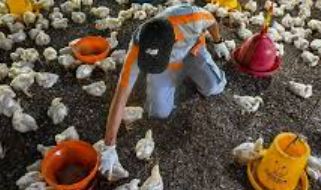The global landscape faces a critical challenge as avian influenza, commonly known as bird flu, spreads with alarming intensity across continents. Public health officials worldwide are on high alert following unprecedented outbreaks affecting not only poultry but also, worryingly, dairy cattle and humans. This article delves into the current spread of various bird flu strains, highlighting the implications for public health and the potential for a pandemic.
The Proliferation of Bird Flu Strains: A Global Concern
In recent years, avian influenza has evolved into a complex global health issue, transcending borders and species barriers. The emergence of severe variants like the H5N1 strain, traditionally confined to commercial poultry, has now extended its reach to include dairy cows in the United States, marking a troubling escalation in its transmissibility and impact on livestock.
The Geographical Spread and Variants of Bird Flu
H5N1: A Menace Expanding Horizons
The H5N1 strain, infamous for its virulence among poultry, has exhibited a concerning trend of jumping species boundaries, infecting diverse animals from alpacas to household pets. Recent occurrences in Australia and Mexico underscore the strain’s adaptability and persistence, posing significant challenges to containment efforts and global health security.
Global Hotspots and Human Implications
United States: Dairy Industry Under Siege
In a startling development, the United States witnessed its first cases of H5N1 in dairy cattle, a development that has rippled through 12 states. The presence of this virus, detected initially in wild birds and commercial poultry, has now afflicted dairy workers, though fortunately, with mild symptoms. This unprecedented crossover into dairy cattle underscores the virus’s adaptability and the evolving nature of the threat it poses.
Mexico: Human Toll Amidst Controversy
Mexico reported its first human fatalities from H5N2 avian influenza, marking a tragic milestone in the region’s battle against the virus. Despite official assertions linking the deaths to pre-existing conditions rather than avian flu, the cases highlight ongoing concerns over public health preparedness and the need for robust surveillance and response mechanisms.
Australia: Struggling with Multiple Outbreaks
Australia contends with a multi-faceted challenge as outbreaks of H7N3, H7N8, and H7N9 strains grip its poultry farms. Originating from wild bird migrations, these outbreaks underscore the vulnerability of agricultural sectors to avian influenza and the urgent need for stringent biosecurity measures to mitigate further spread.
India: Emerging Threats and Local Impacts
India reports sporadic cases of H9N2 avian influenza, with recent incidents highlighting its prevalence in poultry populations. While typically causing mild illness, the virus’s ability to infect humans underscores the unpredictable nature of avian influenza and the ongoing threat it poses to public health systems.
Vietnam and Cambodia: Persistent Challenges in Southeast Asia
Vietnam and Cambodia continue to battle outbreaks of H5N1 and H9N2 strains, reflecting the endemic nature of avian influenza in Southeast Asia. These regions grapple with sporadic human cases and the complexities of preventing zoonotic transmissions amidst diverse cultural and environmental landscapes.
China: Heightened Surveillance Amidst New Threats
China remains vigilant against multiple strains including H5N6, H9N2, and the rare H10N3, which pose significant public health challenges. Recent fatalities underscore the critical need for enhanced surveillance and rapid response strategies to prevent outbreaks from escalating into broader health crises.
Germany: Europe’s Wake-Up Call
In a rare occurrence, Germany reports its first outbreak of highly pathogenic H7N5 bird flu, highlighting vulnerabilities in European biosecurity measures. The incident underscores the global reach of avian influenza and the imperative for coordinated international efforts to safeguard agricultural and public health interests.
Assessing Global Preparedness and Future Outlook
The global response to avian influenza hinges on proactive surveillance, effective containment strategies, and international collaboration. While the World Health Organization acknowledges the current risk to humans remains low, the potential for viral mutations and increased transmissibility underscores the need for continued vigilance and readiness to respond to emerging threats.
Conclusion: Addressing the Impending Threat
As avian influenza strains continue to evolve and spread, the global community faces a pivotal moment in safeguarding public health and agricultural stability. The intersection of ecological factors, human behavior, and viral dynamics necessitates a unified approach to surveillance, response, and pandemic preparedness. By prioritizing early detection, robust biosecurity measures, and equitable access to vaccines, stakeholders can mitigate the impact of avian influenza and fortify global health resilience against future pandemics.
Soumya Smruti Sahoo is a seasoned journalist with extensive experience in both international and Indian news writing. With a sharp analytical mind and a dedication to uncovering the truth, Soumya has built a reputation for delivering in-depth, well-researched articles that provide readers with a clear understanding of complex global and domestic issues. Her work reflects a deep commitment to journalistic integrity, making her a trusted source for accurate and insightful news coverage.



